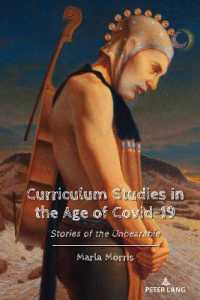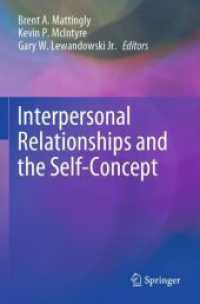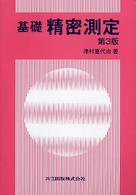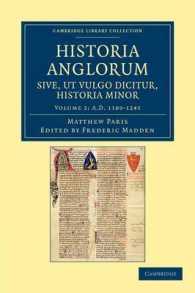- ホーム
- > 洋書
- > 英文書
- > History / World
Full Description
Recent studies in the history of Islamic science based on the discovery and study of new primary texts and instruments have substantially revised the views of nineteenth-century historians of science. This volume presents some of these ground-breaking studies as well as articles which shed new light on the ongoing academic debate surrounding the question of the decline of Islamic scientific tradition.
Contents
Contents: Introduction; Part I Theoretical Underpinnings: Reflections on some new studies on applied science in Islamic societies (8th-19th centuries), David A. King; Problems of the transmission of Greek scientific thought into Arabic: examples from mathematics and optics, Roshdi Rashed; Ibn Khaldun on the fate of Islamic science after the 11th century, Mohamad Abdalla; Between philosophy and mathematics: examples of interactions in classical Islam, Roshdi Rashed; The universe as a system: Ibn Sina's cosmology revisited, Syamsuddin Arif; Al-Quhi: from meteorology to astronomy, Roshdi Rashed. Part II Building Blocks of the Revisionist History: Al-Quhi vs Aristotle: on motion, Roshdi Rashed; The new astronomy of Ibn al-Haytham, Christian Houzel; The Configuration of the Universe: a book by al-Hasan ibn al-Haytham?, Roshdi Rashed; Lunar mansions and timekeeping in Western Islam, Julio Samsó; An instrument of mass calculation made by Nastulus in Baghdad ca 900, David A. King; A pioneer in anaclastics: Ibn Sahl on burning mirrors and lenses, Roshdi Rashed; Causality in Islamic philosophy: the arguments of Ibn Sina, Syamsuddin Arif; The astronomy of the Mamluks, David A. King; Arabic versions and reediting of Apollonius' Conics, Roshdi Rashed; Nasir al-Din al-Tusi's revision of Theodosius's Spherics, Nathan Sidoli and Takanori Kusuba; Time, motion, distance, and change in the Kalam of Fakhr al-Din al-Razi: a preliminary survey with special reference to the Matalib 'Aliyah, 'Adi Setia; The universal plate revisited, Emilia Calvo and Roser Puig; The solar eclipse technique of Yahya b. Abi Mansur, E. S. Kennedy and Nazim Faris; Arabic science in 16th-century Europe: Guillaume Postel (1510-1581) and Arabic astronomy, George Saliba. Part III Looking Forward: History of science and diversity at the beginning of the 21st century, Roshdi Rashed; Name index.








